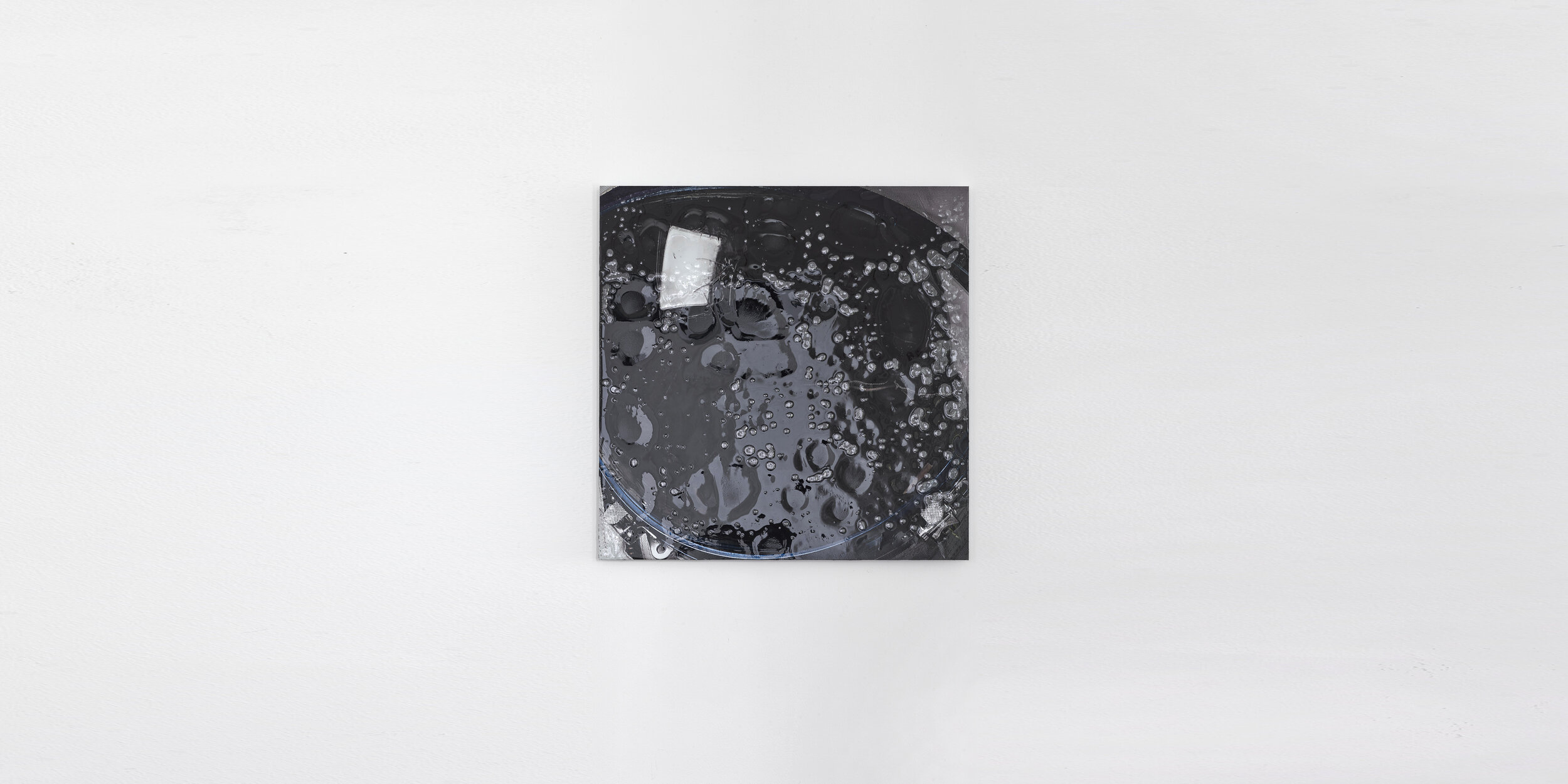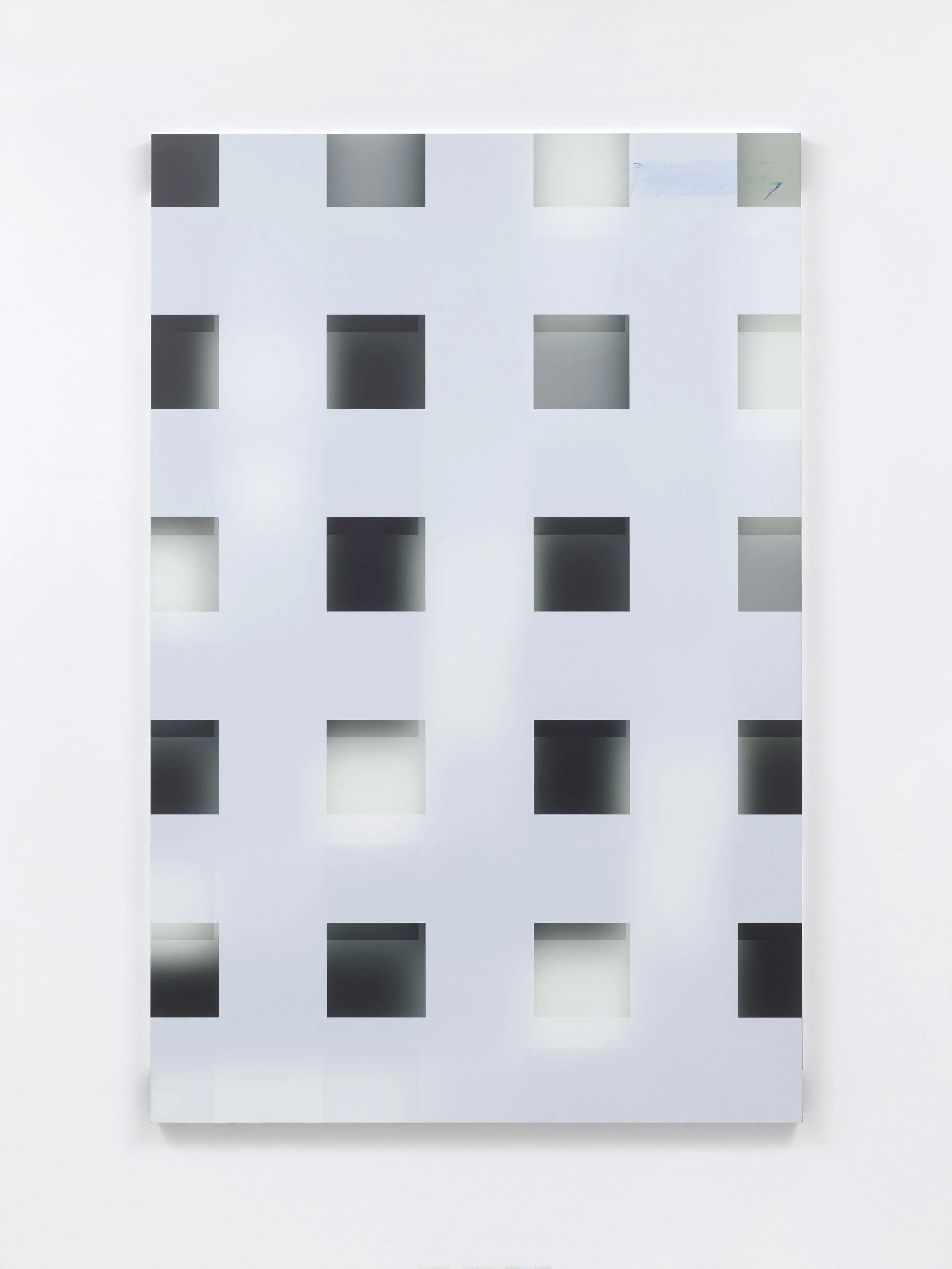
Schweben
Hengesbach Gallery
Wuppertal, 2019
In the twentieth century, sculpture detached itself from the depiction of human or animal bodies. It has encroached upon our surroundings and developed geometric or abstract forms, partly adopted from architecture. It ventures into and stakes out open space in a new way. Despite its abstract forms, part of artistic sculptural production nonetheless retains a remote connection to the human body. This also applies to the work of Nikola Ukic. In contrast to most of his fellow artists, however, the human scale is not the goal of his practice, but ist point of departure.
In his case, the fundamental sculptural components of material and form are not separated, but primordially and inextricably bound together. Ukic does not use a given material that he shapes into a form, but much rather creates the material itself within his artistic process. He primarily uses polyurethane, a synthetic material, which only forms, expands and then solidifies through the mixture of different components in a chemical reaction that releases heat and vapours. In these processes, Ukic instantaneously lends the material ist form, which cannot however be predefined because the material expands vigorously and uncontainably. Hence, his physical activity represents the organisationally intervening point of reference. This process of creation remains visible in the material following its solidification.
The same can be said of volcanic rock, with which Ukic’s works can readily be compared. Accordingly, his sixelement piece Große Konjunktion (Large Conjunction) gives the impression that its blistered surface skin is still in a state of energetic expansion, in which bedrock and earth have been entrained from a crater. The generation of the inherent sculptural material is one of the distinctive features of his work. The other is a concern with the circumstance that our bodily perception and experience has altered in recent decades.
The basic paradigm for our experience of objects is no longer an exploratory visual encounter that attempts to circumnavigate an object in order to apprehend its dimensions from all sides. The focus is much rather on the interpretation of surfaces with their reflected light because, today, objects are mainly presented to us through flat, media representations. In the last few years, Ukic has become interested in confronting his distinctly physical sculptures, which demand a perceptual exploration of their volumes, with the completely different, contemporary bodily experience centred on surfaces. Ukic transfers images onto the surfaces of his sculptures, whereby the image in some cases relates in terms of content or even self referentially to the work itself.
Generating materials requires technical expertise, while generating digital images has nowadays become extremely simple. In his wall pieces, Ukic attempts to reveal these generation strategies by elevating them to the subject matter of the pictures. The starting point might be an image of a simple object such as an ice cube, a piece of meteorite rock, water droplets or a strip of reflective surface. Through the consecutive application of digital image manipulations such as modifying brightness and contrast, shifting shadows, dimming colours, duplications or superimpositions of the same image, it can lose its own identity. In its place, factors such as iridescent light, dissolving contours and ethereal colour gradients gain in significance, lending the image a magical/abstract quality, particularly in the brightness values. At the same time, it becomes evident that these processes themselves take on a physical, sculptural presence when consecutive layers of paint are superimposed in several printing passes. This multiplicity of printing passes, even if they are not immediately visible individually, render the physicality of the coloured pigments perceptible in the final result. The ensuing paradoxical effect is that the greater the number of superimposed pigment layers, the more enigmatic the interpretation of the picture becomes.
Ukic’s approach to image generation is therefore not dissimilar to the creation of his sculptures in that a real volume alone, no matter how fine, is able to exert a credibly suggestive physical force upon us, even though a representational interpretation remains open-ended. In his latest piece, the Large Conjunction, he combines the two generation processes. The respective elements of the sculpture seem to consist of a raw soil, which is contrasted with an aesthetically appealing smooth, black, blistered surface on their slanting front viewing face. Mounted in front of each of these volumes is a visor made from a thin transparent membrane, which features very different, technically geometric, linear air inclusions. These brittle flat sheets, which are inorganic in their material, but organic in their rounded form, exhibit a double linear marking comprising superposed black bands appearing in the upper and lower areas, which are similar in colour to the front viewing face of the PU elements, but set apart from these by virtue of their rigidly linear nature as bands. The space between the bands is automatically perceived as a facial mask and, consequently, the PU element with its truncated conical form as a lying head rising from the ground.
Exhibition Views
Works
Photos by Achim Kukulies



























